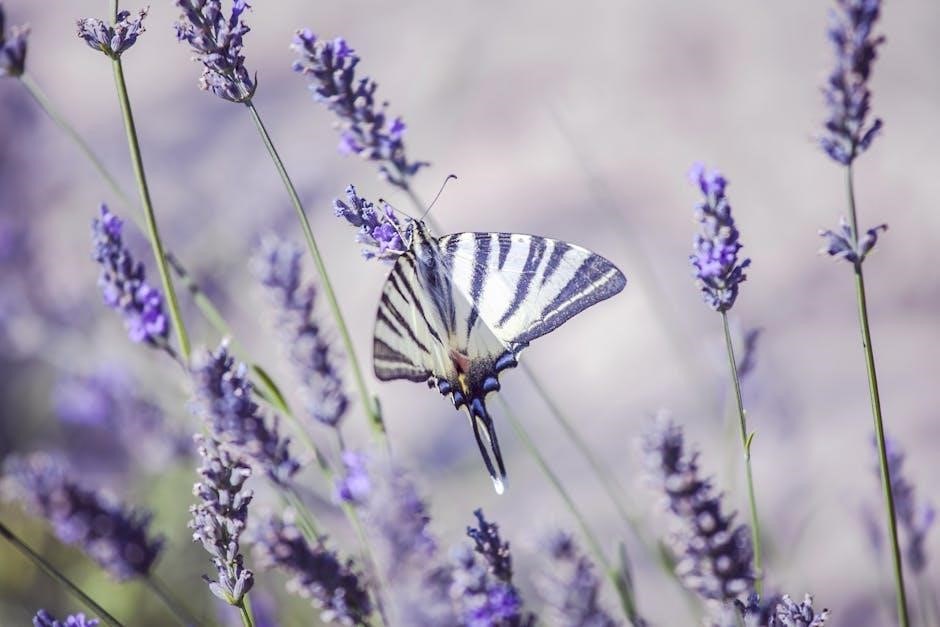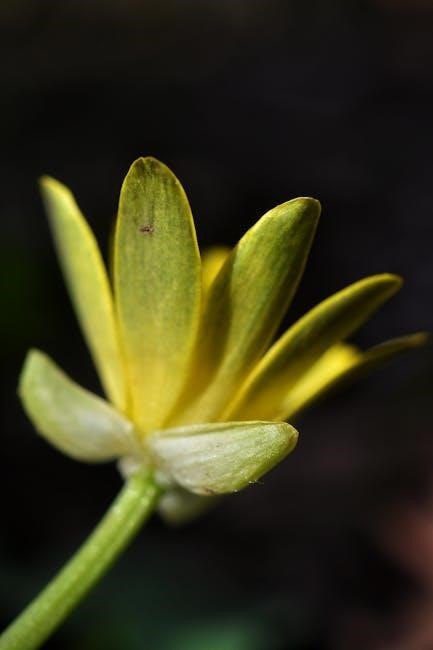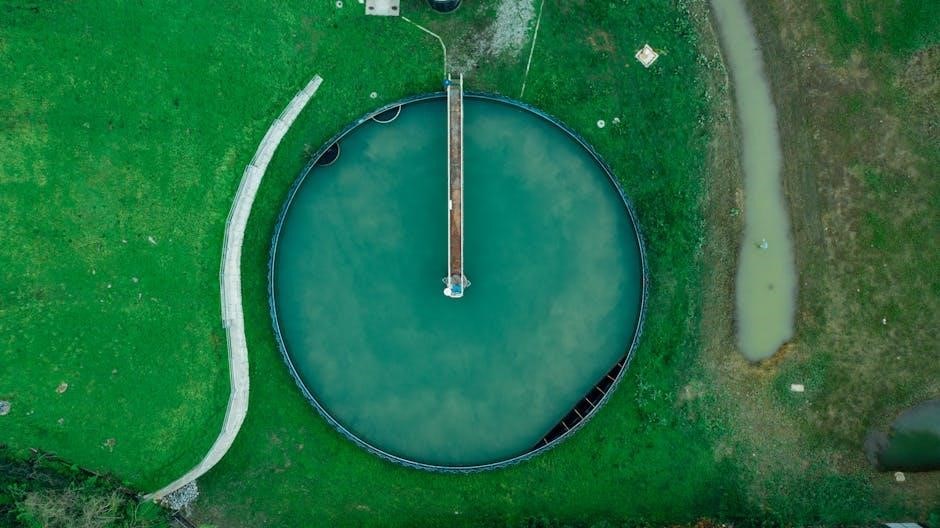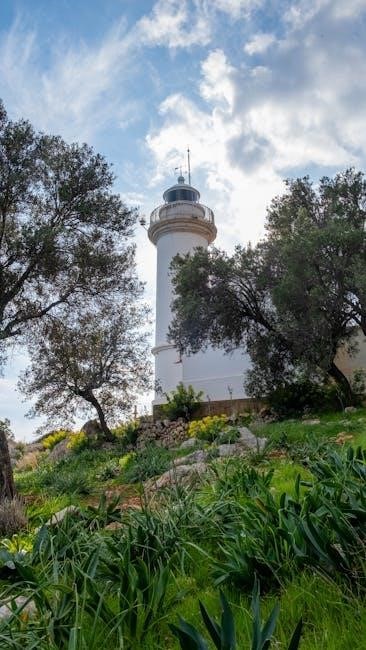Understanding USDA Hardiness Zone 6a
USDA Hardiness Zone 6a has average minimum temperatures of -10°F to -5°F․ This zone supports plants tolerant of moderate cold, making it ideal for diverse gardening in regions with these conditions․
Definition and Average Temperature Ranges
USDA Hardiness Zone 6a is defined by average minimum temperatures of -10°F to -5°F․ This zone supports plants tolerant of moderate cold, making it ideal for gardening in regions with these conditions․ The temperature range helps gardeners determine which plants can thrive in their local climate, ensuring successful growth and proper plant selection․
Importance of Hardiness Zones for Gardening
Hardiness zones guide gardeners in selecting plants suited to their region’s climate, ensuring optimal growth․ Zone 6a’s temperature range helps determine planting schedules and plant choices, minimizing failure risks․ This system aids in planning soil preparation, frost dates, and seasonal care, making it an essential tool for successful gardening in Zone 6a and similar climates․

Best Plants for Zone 6a
Zone 6a supports a wide variety of plants, including vegetables, fruits, and ornamental flowers․ Hardy perennials and annuals thrive, offering vibrant colors and productive harvests throughout the growing season․
Vegetables and Fruits Suitable for Zone 6a
Zone 6a gardeners can successfully grow a variety of vegetables and fruits․ Cool-season crops like spinach, lettuce, and broccoli thrive in spring and fall․ Warm-season crops such as tomatoes, peppers, and squash also excel․ Root vegetables like carrots and beets are reliable choices․ Berries, including strawberries and blueberries, grow well, providing fresh summer harvests․ Proper planting times ensure optimal yields․
Flowers and Ornamental Plants for Zone 6a
Zone 6a offers a vibrant selection of flowers and ornamental plants․ Perennials like coneflowers, daylilies, and hostas thrive, providing colorful blooms throughout summer․ Annuals such as marigolds and petunias add bright accents․ Hydrangeas and roses are popular for their stunning displays․ Spring bulbs like tulips and daffodils are ideal for early color, while asters and sedum extend beauty into fall, ensuring year-round visual interest and garden charm․

Soil Preparation in Zone 6a
Testing and adjusting soil pH is crucial for Zone 6a․ Adding organic matter like compost improves soil structure, enhances nutrient availability, and supports healthy root growth for optimal plant performance․
Testing and Adjusting Soil pH
Testing soil pH is essential in Zone 6a․ Most plants thrive in a pH range of 6․0 to 7․0․ Use a DIY kit or send samples to a lab for accurate results․ If soil is too acidic, add lime; if too alkaline, incorporate elemental sulfur or peat moss to adjust levels effectively․
Improving Soil Structure for Optimal Growth
In Zone 6a, enhancing soil structure is key for healthy plant growth․ Add organic matter like compost or well-rotted manure to improve drainage and water retention․ Mulching helps retain moisture and suppress weeds․ Incorporate cover crops to enrich soil fertility and prevent erosion․ Proper soil preparation ensures robust root development and promotes nutrient availability for thriving plants in this temperate zone․

Planting Schedule for Zone 6a
Zone 6a’s growing season typically runs from mid-April to mid-October․ Start planting cool-season crops like spinach and peas in early spring․ Wait until after the last frost date in May to sow warm-season crops like tomatoes and squash․ Plan fall plantings by late summer for a second harvest․
Spring Planting Timeline
In Zone 6a, spring planting begins in late March to early April․ Start by sowing cool-season crops like spinach, lettuce, and peas․ Plant asparagus and onion sets in early spring․ Potatoes and radishes can be direct-sown once the soil thaws․ Wait until late April or early May, after the last frost, to plant warm-season crops like tomatoes and peppers․ This ensures optimal growth and prevents damage from frost․ Proper timing aligns with local soil conditions and weather patterns, maximizing the growing season’s potential for a successful harvest․
Summer and Fall Planting Options
In Zone 6a, summer planting includes warm-season crops like squash, zucchini, and sunflowers in May․ For fall, start planting cool-season crops such as broccoli, kale, and spinach 8 weeks before the first frost․ Succession planting ensures continuous harvests․ Use cold frames to extend the growing season for hardy greens, allowing them to thrive into fall․ Proper timing maximizes yield and flavor․

Frost Dates and Growing Season
Zone 6a typically experiences its last frost in early May and first frost in late September, offering a growing season of approximately 150-160 days․
Understanding Last and First Frost Dates
In Zone 6a, the last spring frost typically occurs in early May, while the first fall frost happens around late September․ These dates are crucial for timing plantings, ensuring tender plants are set out after the last frost and harvested before the first․ Using these dates helps gardeners calculate the growing season and manage planting risks effectively․
Calculating the Growing Season
The growing season in Zone 6a spans from late spring to early fall, typically lasting around 150-180 days․ This period begins after the last frost in May and ends before the first frost in September․ Gardeners use this timeframe to plan planting schedules, ensuring crops mature within the season․ Proper timing maximizes growth and yield, making it essential for successful gardening in this zone․

Common Gardening Challenges in Zone 6a
Gardeners in Zone 6a face challenges like unpredictable temperature swings, which can damage plants․ Pests and diseases thrive in the moderate climate, requiring vigilant management and preventive measures․
Dealing with Temperature Fluctuations
Zone 6a gardeners often face temperature swings, which can stress plants․ Late frosts in spring and early frosts in fall can damage tender growth․ To adapt, use protective coverings like row covers or cold frames for sensitive plants․ Planting frost-tolerant varieties and timing seedlings after the last frost date can mitigate risks․ Monitoring weather forecasts and employing season-extension techniques helps safeguard crops during unpredictable temperature shifts․
Managing Pests and Diseases in Zone 6a
In Zone 6a, common pests like aphids, slugs, and snails can damage plants․ Regular inspection and organic pest control methods, such as neem oil or hand-picking, are effective․ Diseases like powdery mildew and root rot thrive in moist conditions․ Ensure proper spacing, water plants at the base, and treat infections promptly with fungicides․ Crop rotation and using disease-resistant varieties also help prevent outbreaks․

Seasonal Care Tips
Zone 6a requires tailored seasonal care․ Mulch in fall, water deeply in summer, and prune in early spring․ Monitor for pests and diseases year-round for optimal plant health․
Spring and Summer Care Practices
In Zone 6a, spring care involves preparing soil, pruning dormant plants, and applying compost․ Summer care focuses on consistent watering, mulching, and monitoring for pests․ Sow warm-season crops after the last frost, typically in late May․ Regularly inspect plants for signs of disease or stress․ Use organic mulch to retain moisture and suppress weeds, ensuring optimal growth during the active growing season․
Fall and Winter Maintenance
Fall maintenance in Zone 6a includes cleaning up garden beds, removing dead plants, and composting debris․ Apply a layer of mulch or straw to protect perennials from frost․ Winterize irrigation systems and protect sensitive plants with burlap or snow fencing․ Plan for next year by reviewing successes and failures, and order seeds or plants during the dormant season for early spring planting․

Extending the Growing Season
Extending the growing season in Zone 6a involves using greenhouses, cold frames, and starting seeds indoors to protect plants from frost and allow for earlier planting․
Using Greenhouses and Cold Frames
Greenhouses and cold frames are excellent tools for extending the growing season in Zone 6a․ They protect plants from frost, allowing earlier planting and later harvesting․ These structures maintain warmer temperatures and shield crops from harsh weather, enabling gardeners to grow cool-season crops year-round․ Starting seeds indoors and transplanting after the last frost is also a effective strategy for maximizing the growing period․
Starting Seeds Indoors
Starting seeds indoors is a great way to get a head start on the growing season in Zone 6a․ Begin 4-6 weeks before the last frost date using seed starting soil and grow lights․ Tomatoes, peppers, and herbs thrive when started indoors․ Harden off seedlings before transplanting them outside after the last frost․ This method ensures healthy, robust plants for early spring gardens․

Resources and Tools for Zone 6a Gardeners
The USDA Plant Hardiness Zone Map and seed charts provide essential guidance for Zone 6a gardeners․ These tools help determine optimal planting times and suitable plant varieties․
USDA Plant Hardiness Zone Map
The USDA Plant Hardiness Zone Map is a vital tool for gardeners, dividing the U․S․ into zones based on average minimum temperatures․ Zone 6a, with temperatures ranging from -10°F to -5°F, helps gardeners select plants suited to their local climate․ Regular updates reflect climate changes, ensuring accurate guidance for planting and growing success in specific areas․
Seed Charts and Planting Guides
Seed charts and planting guides for Zone 6a provide detailed timelines for sowing seeds indoors and outdoors․ These resources outline optimal dates for planting vegetables, fruits, and flowers, ensuring they thrive in the local climate․ By following these guides, gardeners can maximize their growing season and achieve successful harvests tailored to Zone 6a’s specific conditions․

Final Tips for Successful Gardening in Zone 6a
Observe local microclimates, use reliable planting guides, and adapt strategies to Zone 6a’s specific conditions for optimal results and a thriving garden․
Local Climate Variations to Consider
Microclimates within Zone 6a can vary significantly due to proximity to water bodies, elevation, or urban heat islands․ These variations may protect plants from extreme temperatures or create unique challenges․ Gardeners should assess their specific microclimate to adjust planting schedules and plant selections, ensuring optimal growth and resilience in their local conditions․
Adapting to Zone 6a Conditions
Adapting to Zone 6a requires selecting plants suited to its temperature range and adjusting planting times based on local frost dates․ Using cold frames or greenhouses can extend the growing season, while starting seeds indoors ensures healthy transplants․ Monitoring weather patterns and soil health also helps in optimizing plant performance and resilience in this zone․





